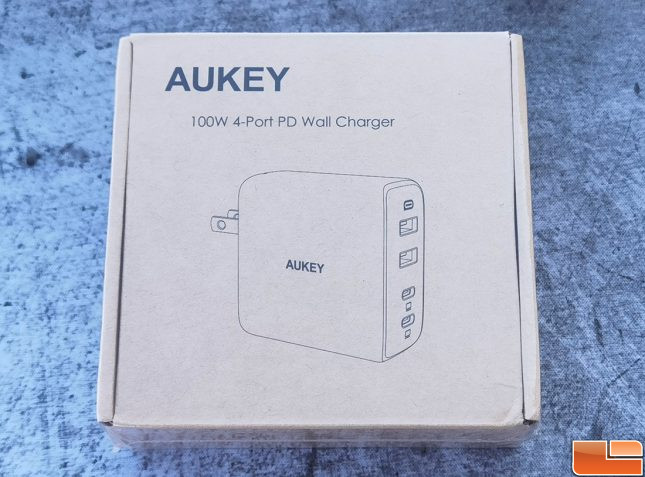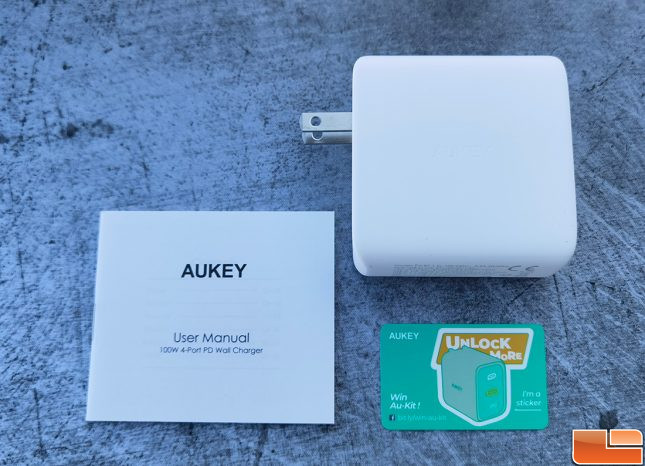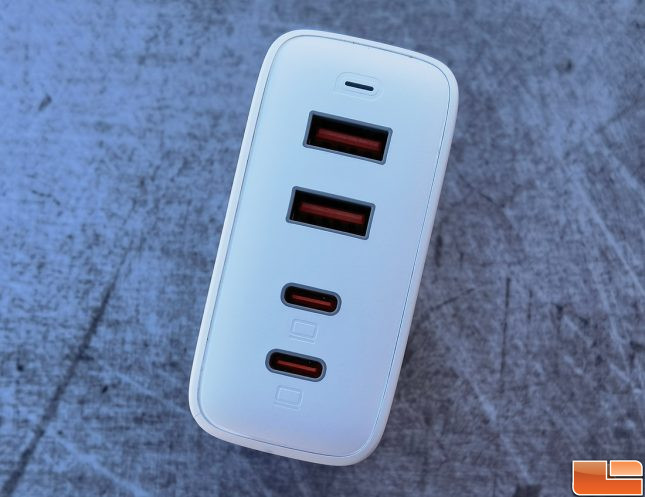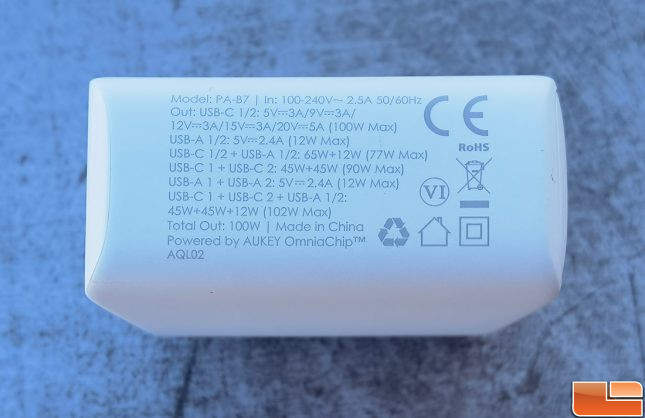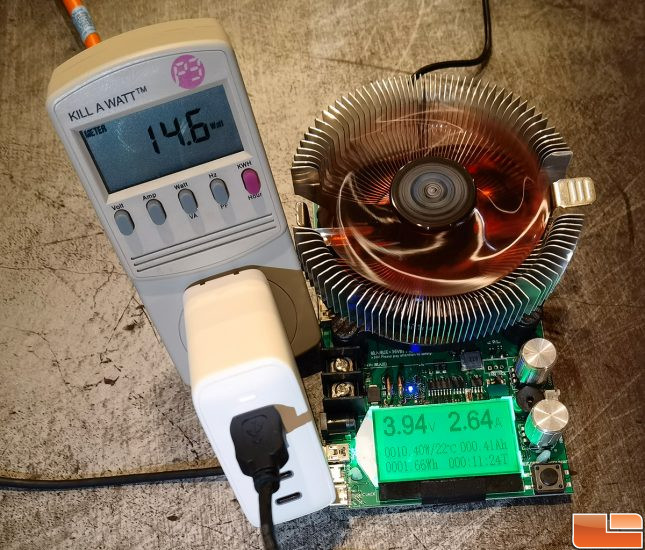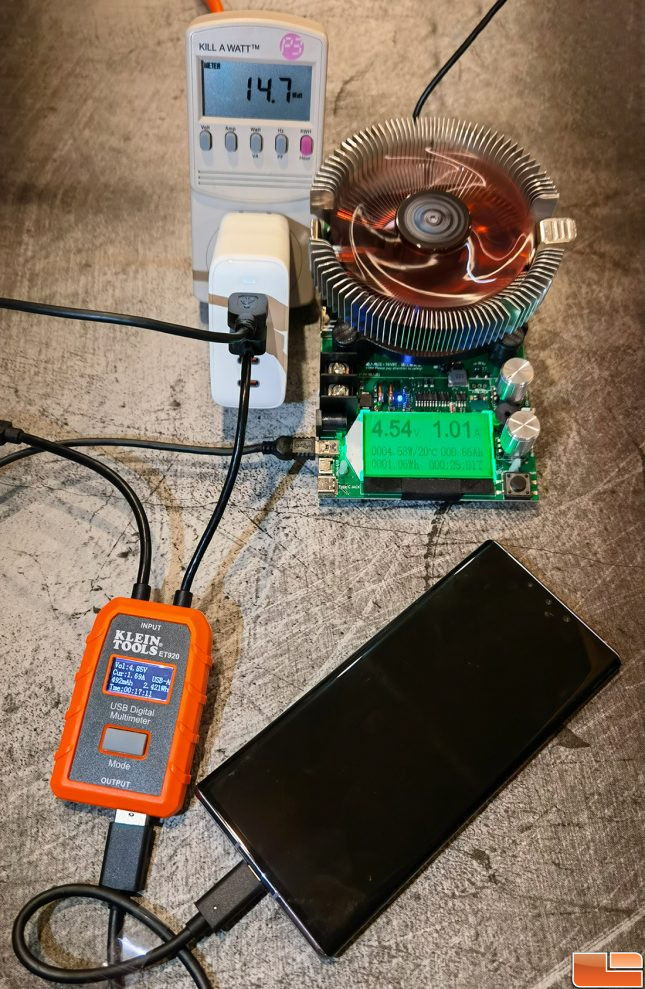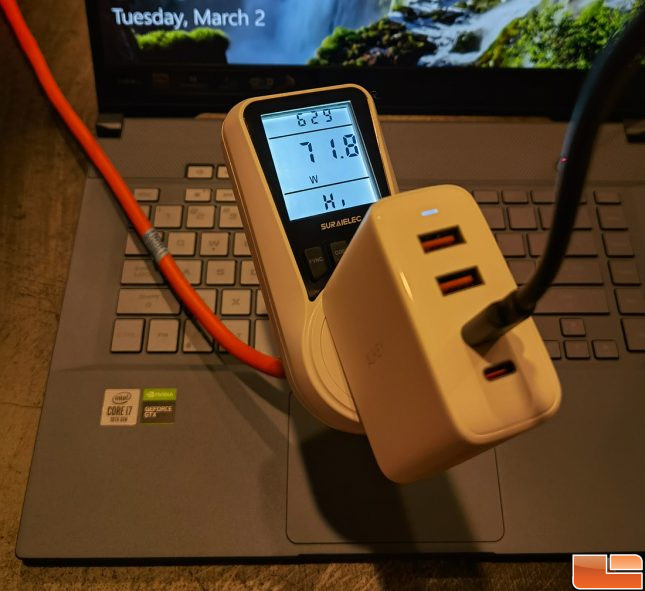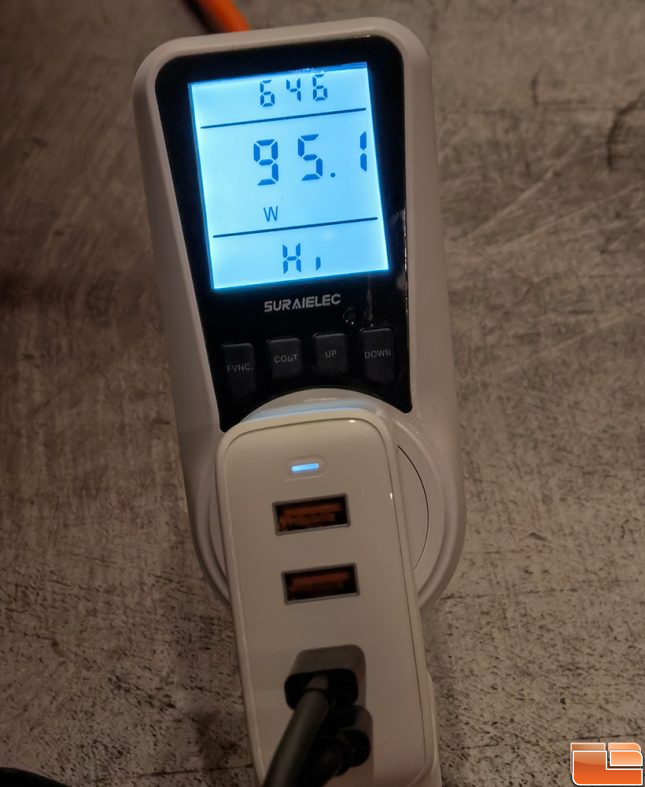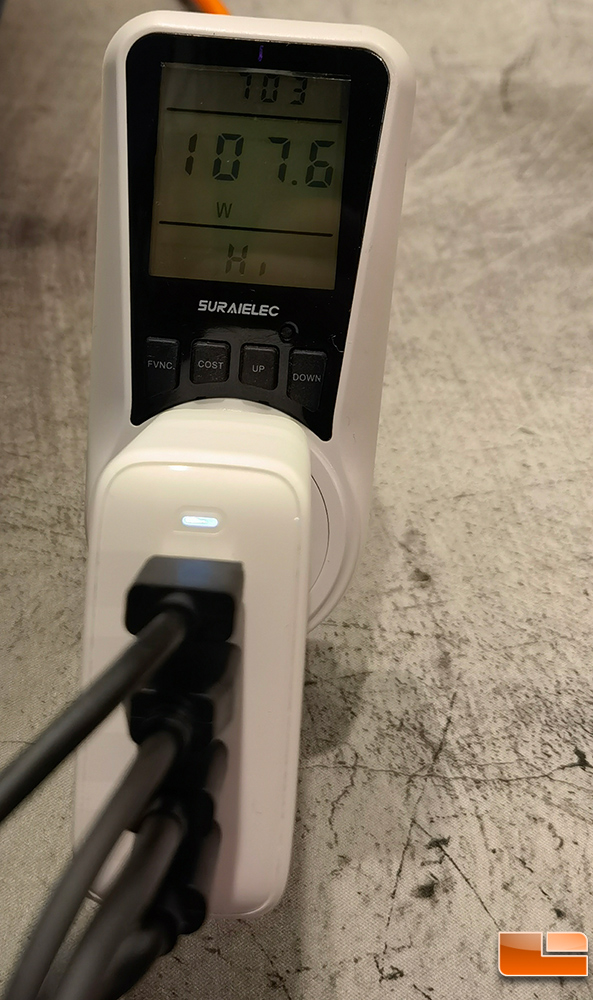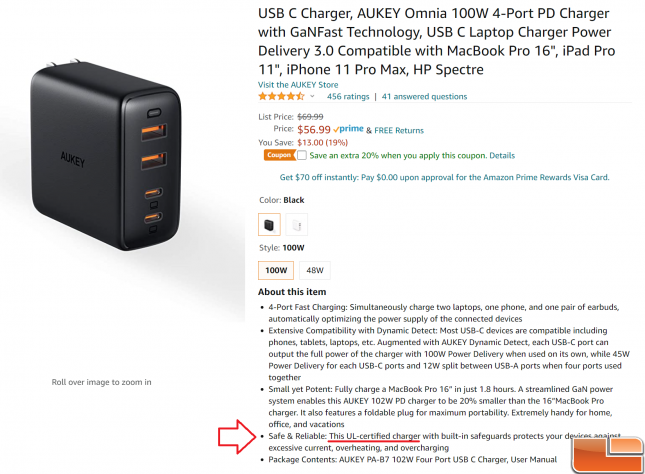AUKEY Omnia Mix4 PA-B7 100W 4-Port PD Charger Review
AUKEY PA-B7 4-Port Wall Charger
Now that some new electronic devices no longer come with wall chargers, a high-quality charger might be just be just what you need. Wall chargers that ship with devices have been notoriously cheap and they often only charge one device. Most of us have more than one device, so aftermarket chargers with multiple ports that can simultaneously charge your electronics have their appeal. The charger we are looking at today is the AUKEY PA-B7 that is rated at 100W and can charge up to four devices for $45.59 shipped over on Amazon. This makes it ideal for use at home or by those that travel often as you can charge many devices and take up just one wall outlet.
AUKEY sent us a review sample to try out and it showed up in AUKEY’s signature plain brown cardboard packaging. AUKEY has always has a minimalistic and low cost approach to retail packaging and that is remains true to this day.
Inside the retail packaging you get the wall charger, user manual and a promotional sticker. The owners manual is actually well written and covers Power Delivery (PD), Dynamic Detect, and GaNFast Technology
The charger is fairly small at 2.75″ x 2.73″ x 1.29″ or 69.8mm x 69.3mm x 33mm. The weight of the charger is 223 grams. This weight is not bad, but it sticks out the wall a good bit and is heavy. If you bump it while it is plugged on a wall there is a good chance it will fall off or move just enough lose power.
On the front of the charger you’ll find two USB A ports and two USB C ports. Most households have a mixture of devices using both of these connectors, so having both is a nice touch.
The power distribution across the USB ports on the PA-B7 charger depends greatly on what you have plugged into the device and the bottom of the charger has a Power Delivery (PD) numbers listed. USB Power Delivery is a multi-voltage charging standard that dynamically negotiates power output over a USB Type-C connection to safely and efficiently charge devices.
AUKEY PA-B7 Output Power
USB-C 1/2: 5V3A/9V3A/ 12V=3A/15V=3A/20V-5A (100W Max)
USB-A 1/2: 5V=2.4A (12W Max)
USB-C 1/2 + USB-A 1/2: 65W+12W (77W Max)
USB-C 1 + USB-C 2: 45W+45W (90W Max)
USB-A 1 + USB-A 2: 5V=2.4A (12W Max)
USB-C 1 + USB-C 2 + USB-A 1/2: 45W+45W+12W (102W Max)
The two USB-A ports have a total power output of 12W (5V-2.4A). We used our USB load tester to check the actual output of the USB-A ports. The highest we got with our load tester was around 10.4 Watts of power when using a single USB-A port.
To test both USB-A ports at the same time we connected a Huawei Mate 30 Pro to one port and the load tester to the other port. We then increased the load on the load tester to see how much power could be drawn before safety protocols kicked in. The highest power draw that we could get from both ports at the same time was about 12.8 Watts. These ports are rated at 12W max, so we are happy with these readings.
To test the USB Type-C port out we ran into some issues as apparently neither USB power tool that we have at our disposal supports USB-PD. So, we grabbed our ASUS ROG Zephyrus M15 GU502L gaming laptop and plugged it into one of the USB ports and was able to charge it just fine. The wall power meter showed that we used at most 71.8 Watts of power to charge this laptop. The maximum power draw for a single USB Type-C device on this charger is 100 Watts (20V, 5A) but none of our laptops were able to pull that much power.
If we plugged in two gaming laptops into the USB Type-C ports, the power draw was around 93 Watts constant at the wall the a peak of 95.1 Watts. The rated power draw for both USB Type-C is 90 Watts or 45W each. We appear to be in the ball park of where things should be.
When we plugged in two gaming laptops and two smartphones the peak power draw at the wall was 107.6 Watts of power and all four devices were charging at the same time. The max power output is 102W, so this is a good sign that the wall charger is working as advertised. It gets warm to the touch pulling this much power, but was not hot enough to be a concern.
AUKEY PA-B7 UL-Certified?
AUKEY advertises that the PA-B7 charger is UL-certified. We were unable to find any AUKEY chargers listed in the UL Certification Database and the device has no UL markings on the housing. This is not required to be sold and many companies don’t apply for UL Certification due to costs and the time it takes to be certified.
Final Thoughts and Conclusions
Buying a power charger for your electronics can be tough as there are many of them and not to many people actually load test them. Our testing equipment fought us a little bit, but we are pretty confident that this wall charger is able to deliver the full 100 Watts of power that it claims to. At $45.59 shipped over on Amazon this will keep most devices charged and do so with ease. It comes backed by a 1-year warranty.
The one thing that we noticed during testing is that if you have one USB Type-C device plugged in and then use the second USB Type-C port the power will reset for proper distribution. This means the device that was originally plugged in will lose power. This might be an issue for some as the power will be interrupted. This gets annoying if you are powering a hub or display!
This charger also does not support the Programmable Power Supply (PPS) standard that Samsung uses for Super Fast Charging. Samsung Galaxy owners that are looking for 25W or 45W charging will find this of interest as this wall charger will not charge at those rates. It would be awesome if it did as you could charge two of these phones at the same time with Super Fast Charging (45W) with a single wall charger, but this charger will not do that.
AUKEY has a solid wall charger here with the PA-B7, but they still have room for improvement!
Legit Bottom Line: Being able to charge off all four ports at the same time is awesome, but we wish it supported more charging standards!

